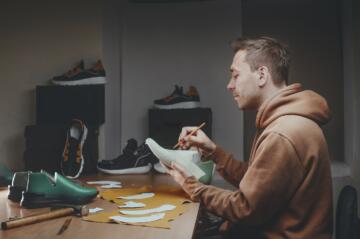Reducing costs and increasing resilience
The implemenation of the circular economyThe circular economy is a restorative and regenerative economy. By maintaining the value of the products, materials and resources in the economy through smart product design, repurposing and/or shared use of products, it reduces the extraction of natural resources by using resources already present in the economy. in the manufacturing industry has many advantages. Less consumption of resources helps reduce costs. The circular approach reduces dependence on global suppliers of raw materials and increases companies’ resilience. Being sustainable also allows companies to reach new segments of the market. Finally, as part of its taxonomy strategy, the European Union positions the circular economy as one of its six strategic areas; showing commitment to moving towards a circular economy will ultimately benefit a company’s capacity to obtain funding.
Circular economy strategies
What circular strategy should you adopt? The manufacturing industry is composed of a multitude of sub-sectors, and depending on the type of business, there are a variety of circular economy development opportunities. One company might choose to increase the percentage of recycled raw materials when launching new products, thereby reducing the use of new raw materials. Another might optimise its manufacturing processes to reduce the consumption of energy and water, thereby minimising waste production. Another promising route might be to recycle your own manufacturing waste by using it as raw materials for new products.
Involving the supply chain
Companies that want to adopt a circular approach should involve the entire supply chain: suppliers, distributors, service providers, clients etc., so that the circular economy is taken into account at each stage. The key ingredients for this are collaboration, experimentation and constant monitoring to accelerate the transition towards a circular economy.
Find out more
VLAIO
Vlaanderen Circulair





